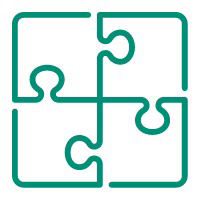 Puzzle Test - Puzzle Reasoning Questions for Bank Exams
Puzzle Test - Puzzle Reasoning Questions for Bank Exams /topics/puzzle-test  View more questions
View more questions
- Free Test Series, Mock tests and Practice Tests
- Time proven exam strategies
- Exam analysis and simulated tests
- Hand-on real time test experience

Recently Added Articles View More >>
As you know reasoning puzzle questions are included in almost all the competitive exams. The mental ability of the students is tested through puzzle questions in bank exams. If you are also preparing for any bank exam, then you must go through the reasoning puzzle questions. Sometimes students take a lot of time to solve puzzle questions in exams.
Vikram Singh 6.0K Views
Most Popular Articles
Most Popular Articles
Recently Added Questions
4 Answer : 1
4 Answer : 2
4 Answer : 4
4 Answer : 3
4 Answer : 2
- 1Data in statements I and II together is sufficient to answer the questiontrue
- 2Data in statement II alone is sufficient to answer the question while data in statement I is notfalse
- 3Data in statement I alone is sufficient to answer the question while data in statement II is notfalse
- 4Data in either statement I alone or statement II alone is sufficient to answer the questionfalse
- Show AnswerHide Answer
- Workspace
- SingleChoice
Answer : 1 Data in statements I and II together is sufficient to answer the question
- 1Data in statement I alone is sufficient to answer the question while data in statement II is not.false
- 2Either data in statement I or statement II is sufficient to answer the question.true
- 3Data in statements I and II together are sufficient to answer the question.false
- 4Data in statement II alone is sufficient to answer the question while data in statement I is notfalse
- Show AnswerHide Answer
- Workspace
- SingleChoice
Answer : 2 Either data in statement I or statement II is sufficient to answer the question.
- 1B is standing on step 2false
- 2C is standing on step 4false
- 3E is standing on step 3false
- 4D is standing one step higher than Ctrue
- Show AnswerHide Answer
- Workspace
- SingleChoice
Answer : 4 D is standing one step higher than C
- 1Data in statement II alone is sufficient to answer the question while data in statement I is not.false
- 2Data in statement I alone is sufficient to answer the question while data in statement Il is not.false
- 3Data in statements I and II together are not sufficient to answer the question.true
- 4Data in statements I and II together are sufficient to answer the question.false
- Show AnswerHide Answer
- Workspace
- SingleChoice
Answer : 3 Data in statements I and II together are not sufficient to answer the question.
- 1Data in statement I alone is sufficient to answer the question while data in statement II is notfalse
- 2Data in either statement I alone or statement II alone is sufficient to answer the questiontrue
- 3Data in statements I and II together is sufficient to answer the questionfalse
- 4Data in statement II alone is sufficient to answer the question while data in statement I is notfalse
- Show AnswerHide Answer
- Workspace
- SingleChoice


